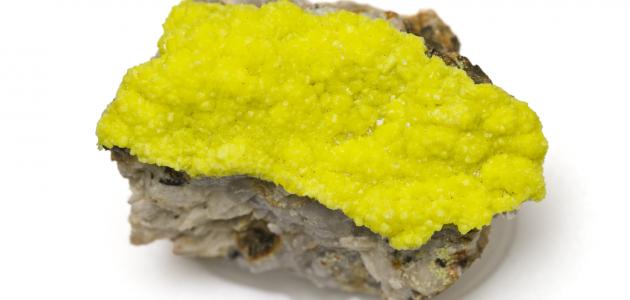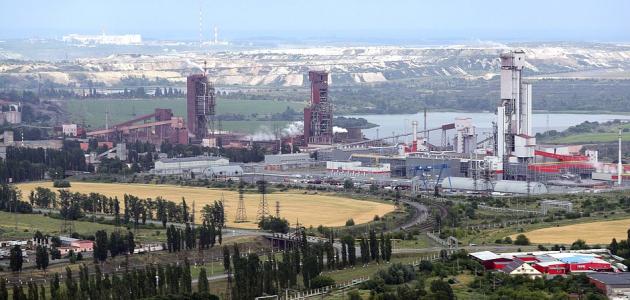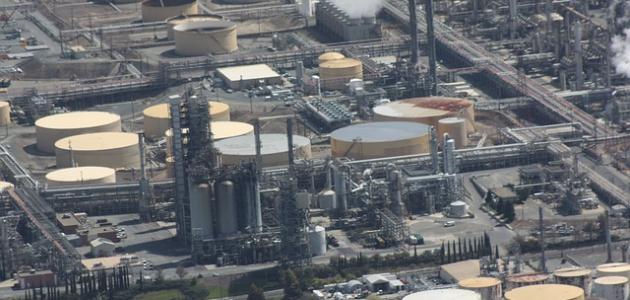petroleum
Petroleum is known as the complex mixture of hydrocarbons that exist in solid, gaseous, or liquid form in the ground. Although this concept usually refers to the liquid form, which is called crude oil, it includes natural gas, The solid form is known as bitumen.
Petroleum is formed in the ground
organic theory
The organic or biological theory (in English: Biogenic theory) that explains the formation of petroleum is the most accepted theory among geologists, as they believe that it was formed as a result of the pressure and heating to which organic materials were exposed over the course of geological time. According to this theory, the formation of oil went through many stages, which are :
- Oil consists of the remains of plankton, algae, and plants that existed prehistorically, millions of years ago, and were buried in large quantities at the bottom of the sea or lake under conditions of lack of oxygen.
- Organic materials mixed with clay are buried under many layers of sediment over geological time after the ancient seas dried up.
- Organic materials are exposed to high levels of heat and pressure, which causes them to change chemically into a waxy substance called kerogen. This substance is then transformed into various forms of hydrocarbons such as coal, natural gas, and peat as the temperature rises in a process known as cracking. (In English: catagenesis).
- Hydrocarbons sometimes migrate upward through adjacent rock layers, since most of them are lighter than rocks or water, until they are trapped inside porous rocks called reservoir rocks (in English: reservoirs) under the impermeable rocks, and the concentration of hydrocarbons in the traps forms oil fields, and the oil may turn Converted to natural gas through the thermal cracking process.
Inorganic theory
The abiotic theory constitutes a minority opinion, especially among geologists, and was adopted by the astronomer Thomas Gould based on beliefs from Russia, and in particular from the studies of Nikolai Kudryavtsev. This theory says that hydrocarbons of geological origin exist on this planet.
Read also:The importance of petroleumPetroleum classification
Petroleum or crude oil can be classified into many classifications, including the following:
- Classification of petroleum according to its geographical location: Oil can be classified according to its geographical location. Although wells are drilled in all parts of the world, there are three main sources of oil that serve as reference points for pricing and arranging other oil supplies, which are:
- Brent crude: Brent crude oil constitutes a total of 15 oil fields distributed between Scotland and Norway in the North Sea, which provide oil to most European countries.
- West Texas Intermediate Crude: West Texas crude is light, of very high quality, and is considered a supplier to most North American countries.
- Dubai crude: This type is also known as Dubai-Oman crude, which is produced in Dubai, in addition to its recent production in the State of Oman. This type is light and sour (in English: sour), and is also a reference point for pricing in the Arabian Gulf, which exports most of it to Asia.
- Note: Another important exporter of crude oil is the Organization of the Petroleum Exporting Countries, called OPEC for short, as it serves as a reference for the average price in the twelve member countries such as Algeria, Ecuador, Iran, Angola, Iraq, Libya, Kuwait, Saudi Arabia, and others.
- Classification of petroleum according to content: Petroleum can be classified according to the percentage of sulfur content in it. Petroleum containing more than 0.5% of sulfur is called sour petroleum, while petroleum containing less than 0.5% of it is considered sweet, which is considered more valuable. It is less harmful to the environment, and does not require much refining.
- Classification of petroleum according to density: The American Petroleum Institute (API) has developed a classification system for petroleum, which is based on measuring the density of the petroleum liquid compared to water, and it is called gravity (API), as it classified petroleum into light and heavy, and light oil is considered to have a higher production of hydrocarbons, so it is considered preferable, while Heavier oil contains higher concentrations of sulfur and minerals, which require additional refining processes.
Petroleum products
Petroleum products are known as the substances that are derived from petroleum after processing in its refineries, and which consist of complex mixtures, in contrast to petrochemicals, which consist of pure, specific chemical compounds. It is noteworthy that most petroleum is converted into petroleum products, which include Many types of fuel. There are more than 6000 materials made from by-products of waste oil, such as perfumes, fertilizers, wax, soap, and pesticides. Examples of types of refined petroleum products include the following:
Read also:Petroleum transportation- Kerosene: Kerosene is a lightweight substance that spreads and evaporates quickly, in addition to being easy to flow.
- Lubricant: Lubricating oil is a medium-weight petroleum product that is easy to spread if treated immediately, and is also easy to flow.
- benzene: Gasoline is an easy-flowing, lightweight, and rapidly spreading substance, as it can completely evaporate in a few hours under natural conditions. Gasoline is biodegradable, but it is more toxic than crude oil.
- Crude Oil No. 2: This fuel is non-volatile, easy to separate, lightweight, and easy to flow.
- Crude Oil No. 4: It is one of the types of fuel that consists of an easy-flowing, medium-weight material that can be dispersed easily if it is processed immediately.
- Crude Oil No. 5: This fuel is a low-volatile, medium-heavy fuel.
- Crude Oil No. 6: This petroleum product is a heavy substance that requires preheating for use, is difficult to pump, is low in volatility, and is difficult or impossible to separate.









